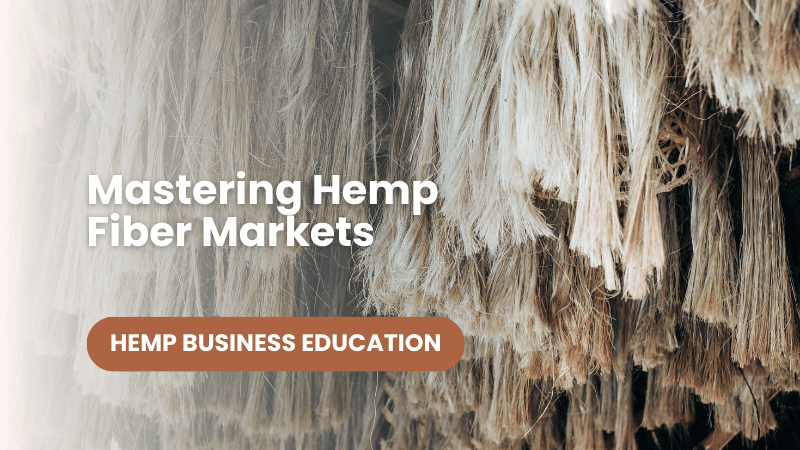Blog ► Mastering Hemp Fiber Markets
Mastering Hemp Fiber Markets
Posted 09/08/22 | Author: Lawrence Serbin Fibers are currently used in a multitude of industries. Fibers made from hemp have the potential to be integrated into numerous, diverse enterprises. As companies move away from petrochemicals and fiberglass, hemp is poised to supplant synthetics as a renewable and sustainable solution to environmental concerns. Modern Uses of FibersThe modern use of fibers is vast and includes industries such as electronics, telecommunications, textiles, aerospace, defense, construction, automotive, and sporting goods. The added benefit of eco-friendly natural fibers makes them a growing commodity. Whether it's due to new ecological construction concepts, regulations, certifications, health issues, or the environmental impact of product manufacturing, use, and disposal – industries are increasingly relying on environmentally friendly filling and insulating materials made of pulp or fibers. Natural fiber products are conquering more and more industrial and consumer fields, and it's not just for environmental reasons. Applications in Different IndustriesIn the food and beverage industry, natural fibers can replace plastic wrapping, increasing food safety with improved properties for food preservation. The automotive industry has started using plant fibers for manufacturing lightweight car bodies. The construction industry is always looking for ways to improve efficacy. The performance of natural insulating materials is equivalent to that of many mineral and synthetic materials, but natural insulating materials are less risky for the installer. Furthermore, natural fibers are usually harmless and easier to handle for disposal. Learn more about the properties of hemp textiles here. Industry Requirements for FibersIndustries that utilize fibers all have their unique set of requirements. These specifications are numerous and can include length, thickness, strength, absorbency, bonding, weight, color, stretch, conductivity, heat capacity, risk to health, and biodegradability. Processing and Standardizing Hemp FibersBoth hemp grown for fiber or grain contains bast fibers that are held together by lignin. They frequently need to be separated from one another by either physically combing them or chemically removing the lignin in a process known as degumming. Both processes can thin the fibers as well as shorten their length. Once the fibers are separated from one another, they may be further sorted based on length and thickness. Other machinery exists to reduce the fibers even further in a process known as reduction. Every application for fibers is unique and requires its own set of parameters. Characteristics of Hemp FibersNot only do fibers need to be a certain length or thickness, but they also frequently need to be uniform. The average difference in length and/or thickness between the fibers is referred to as standard deviation. Some applications can accept a greater tolerance of variation than others depending on their use. Cleanliness is also an issue. Fibers need to be free of small particles or contamination. Meeting Industry StandardsThe successful entrepreneur will need to consider all these parameters and understand the needs of their target customers. Once the hemp fiber is harvested, processing facilities will be required to modify their fibers to fit their client’s expectations. Having the ability to adjust the fibers for length, width, and color opens the door to multiple industries and clientele. Uniformity of the fibers is part of quality control. The companies that can master the manipulation of hemp fibers and provide consistent quality will expand their markets and be the most successful. |